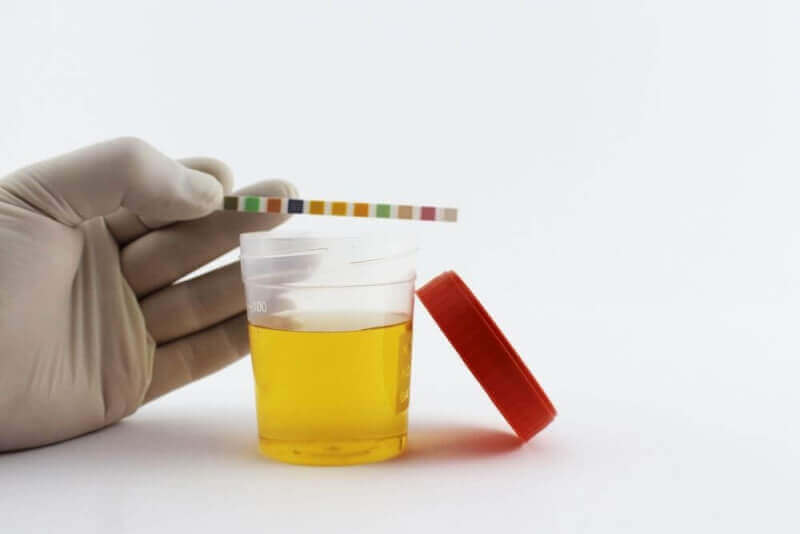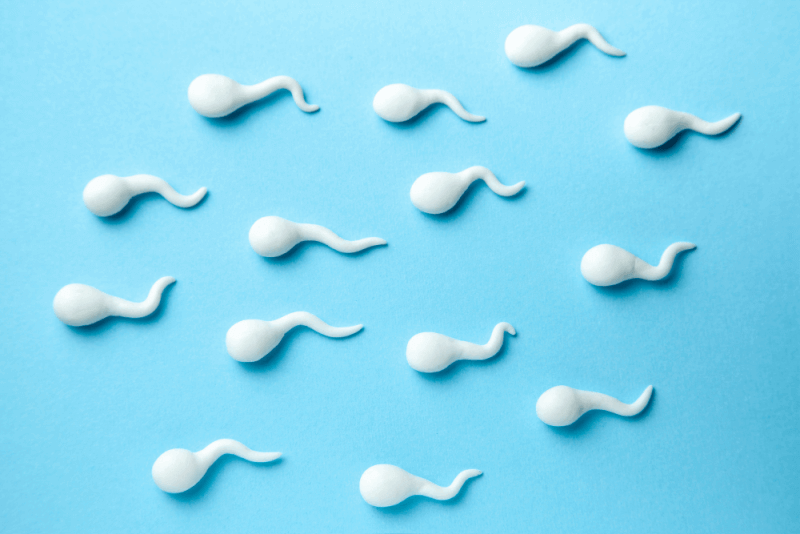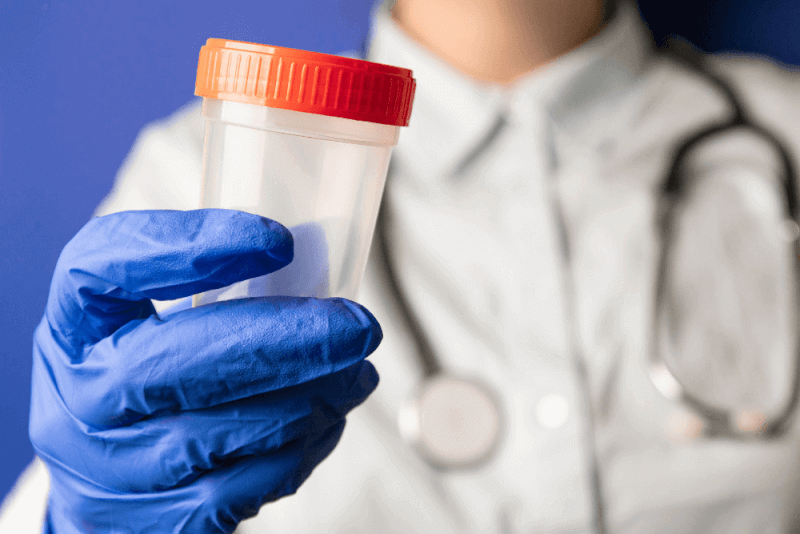What is a urine test?
The test that allows various values of urine to be checked is called urine test. It provides diagnosis of many different diseases from urinary tract infection to diabetes.
The urinalysis checks many parameters such as the appearance, concentration and content of the urine. If the urine test shows abnormal values, further tests may be required to diagnose the disease.
Why is a urine test done?
A urine test is one of the common tests that can be performed for many different reasons.
Common causes include the following.
General health check
Urinalysis is one of the preferred tests in routine health examinations. It is part of the preparation before pregnancy control or surgery. It is also used to screen patients hospitalized with any symptoms for diabetes, liver or kidney disease.
Diagnosis of medical condition
A urinalysis may be ordered if there is abdominal pain, frequent and painful urination, back pain, blood in the urine and other urinary problems. This test can help diagnose the cause of these urinary complaints.
Monitoring the medical condition
Urine tests are also used to check the patient's condition after a diagnosis of urinary tract or kidney-related diseases. These patients may require regular urine tests.
How is a urine test performed?
No preparation is required before the urine test is performed. However, if a specific value is to be checked, then the health professional will warn patients about this.
However, some medicines may affect the results of urinalysis. For this reason, people taking medication should inform their doctor before the test.
It provides sample containers to patients for urinalysis. It may be necessary to collect a urine sample in the morning hours to obtain some values more accurately. It may also be necessary to collect the sample for culture testing from the middle of the stream.
In this test, called culture test, the following steps should be taken to take the sample sample.
- First, the urinary opening must be cleaned. For this, women need to separate their inner lips and clean the area from front to back. In men, it is sufficient to clean the tip of the penis.
- Then urinating in the toilet starts.
- Urinate into the specimen cup in the middle of the urine.
- It is sufficient if the sample is 30 to 60 ml.
- Afterwards, urination should be completed in the toilet.
- The urine sample must be delivered within 60 minutes.
- If the sample cannot be delivered within this time, it must be refrigerated as instructed by the doctor.
In some cases, a thin, flexible tube is inserted through the urethral opening into the bladder to collect a urine sample.
What values are checked in a urine test?
Urinalysis is evaluated in three different ways. These are visual inspection, dipstick test and microscopic examination.
Visual inspection
In a visual examination, the laboratory technician visually inspects the urine sample. The presence of cloudiness or an unusual odor on this examination may indicate some problems such as infection.
In addition, the appearance of foamy urine is also a sign that protein appears in the urine. The color of urine is also important in visual examination.
Red or brown urine color can be caused by blood, as well as by the food or medicines consumed.
Dipstick test
A dipstick is a thin plastic rod with strips of various chemicals on it.
The substances that cause these chemicals to react are tested for in the urine. Among the things checked with the dipstick test are the following.
Acidity
The pH measurement measures the amount of acid in the urine. The pH level gives an idea about a kidney or urinary tract disorder.
Concentration
A test that shows how concentrated the particles are in the urine. Higher than normal concentration is a consequence of not drinking enough fluids.
Protein
Normally, protein levels in urine are expected to be low. Small increases in the amount of protein are not considered significant. However, large increases are considered a sign of kidney problems.
Sugar
The urine of a healthy person contains almost no sugar. However, if sugar is found in the urine in the test, follow-up tests for diabetes should be performed.
Ketones
As with sugar, if even small amounts of ketones are found in the urine, the patient should be monitored for diabetes.
Bilirubin
Bilirubin, which results from the breakdown of red blood cells, is transported with the blood to the liver and becomes part of bile. Bilirubin in urine is considered a sign of kidney damage.
Infection
The presence of nitrites or leukocyte esterase in urine is considered a sign of urinary tract infection.
Blood
Blood in the urine indicates the need for additional tests. This is because it indicates kidney damage, infection, kidney or bladder stones, kidney or bladder cancer or blood disorders.
Microscopic examination
In the microscopic examination, which is part of the urinalysis, concentrated drops of urine are examined microscopically in a special machine.
Patients need extra testing if any of the levels below are above average.
- White blood cells can be a sign of infection.
- Red blood cells can be a sign of another medical condition such as kidney disease, blood disorders or bladder cancer.
- Bacteria, yeasts or parasites can be indicators of infection.
- Tubular proteins can be a consequence of kidney disorders.
- Crystals formed from chemicals in the urine can be interpreted as a sign of kidney stones.
When is a urine test performed?
Many different pieces of information about health can be obtained from urine tests. For this reason, it is also desired for various reasons.
A urine test may be ordered for one or more of the following conditions.
- As part of a routine medical examination to screen for early signs of certain health conditions
- Experiencing various symptoms of diabetes or kidney disease
- Monitoring the treatment of diseases such as diabetes or kidney disease
- Diagnosis of urinary tract infection
- Hospitalization
- As an operative preparation control
Pregnancy in urine test
A laboratory urine test does not look for signs of pregnancy. A blood test is used for this. However, a pregnancy test can be done at home with a stick test available from the pharmacy.
It is usually necessary to wait for the first menstrual period to get the correct diagnosis. However, some tests can give results 7-10 days after fertilization. The urine test can be done in two different ways.
The first of these methods is to dip the test strip in urine. Second, a few drops of urine should be placed in the center of the stick. The result can be obtained after waiting for approximately 5 minutes.
In some cases, a pregnancy test can give a false positive result. These situations include the following.
- Some anxiety medications
- Some antipsychotics
- Anticonvulsants
- Medicines used for Parkinson's disease
- Some diuretics
- Antihistamines
- HCG injection in infertility treatment
- Chemotherapy
- Molar pregnancy
- Urinary tract infection
- Kidney diseases that cause blood or white cells to appear in the urine
- Germ cell tumors
- Pituitary problems
What should the urine test values be?
The normal values expected in a complete urinalysis are as follows.
- Density: 1.005- 1.025
- pH: 4,5- 5
- Bilirubin: negative
- Hemoglobin: negative
- Clarity: clear
- Color: yellow
- Gkukoz: negative
- Ketone: negative
- Leukocyte esterase: negative
- Nitrite: negative
- Protein: negative
- Urobilinogen: negative
- Bacteria: negative
- Erythrocytes: <2/hpf
- Leukocytes: <2- 5 hpf
- Epithelium: <15- 20 hpf
- Hyaline cylinder 0- 5
- Crystal: rare
- Yeast: negative








